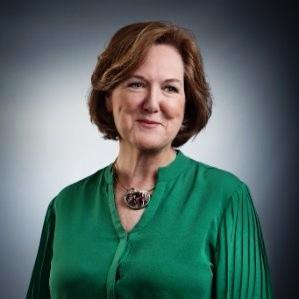Employee Ownership Month: An Advocacy Guide on Employee Stock Ownership Plans (ESOPs)
“With the ‘silver tsunami’ of Baby Boomer business owners set to retire…[the ESOP Association is] committed and focused on continuing to increase education and awareness about ESOPs for both companies and the professionals they rely on for advice and counsel.”
Paul Pflieger, Director of Communications at The ESOP Association (TEA)
Employee ownership is a very attractive form of employment to some workers. It consists of employees acquiring shares in the company through an option plan called an employee stock ownership plan (ESOP). While selective plans are only made available to senior executives, all-employee plans offer participation to all workers.
The National Center for Employee Ownership (NCEO) describes employee stock ownership plans as trust funds for employees. Companies contribute cash to buy company stock, contribute shares directly to the plan, or have the plan borrow money to buy shares. If the plan borrows money, the company makes contributions to the plan to enable it to repay the loan. Contributions to the plan are tax-deductible, and employees pay no tax on the contributions until they receive the stock when they leave or retire. They can then either sell it on the market or back to the company.
If an ESOP owns 30 percent or more of company stock and the company is a C corporation, owners of a private firm selling to an ESOP can defer taxation on their gains by reinvesting in securities of other companies. S corporations can have ESOPs as well, and earnings attributable to the ESOP’s ownership share in S corporations are not taxable.
In other plans, employers partially match employee 401(k) contributions with contributions of employer stock. Employees can also choose to invest in employer stock whereby companies give employees the opportunity to purchase shares at a fixed price for a predetermined number of years.
“ESOPs are retirement plans, governed by some of the same laws and regulations as 401(k) plans,” according to The ESOP Association (TEA). “ESOPs, though, are fundamentally different from 401(k)s, offering far more advantages to businesses, owners, employees, and communities.”
What are the Benefits of ESOPs?
There are cascading benefits of ESOPs for employees, employers, and surrounding communities, according to the TEA. These include the following:
- Motivating employees
- Increasing productivity
- Improving employee retention
- Excelling at providing employee training
- Keeping jobs local
- Countering wealth inequality
- Contributing to business health and longevity
ESOPs result in motivated and engaged employees who are driven to work hard because they are rewarded if the stock rises and they lose out when the stock falls. This type of incentive encourages employees to problem-solve and work on efficiencies in order to push the company’s success and profits forward.
Typically, ESOPs require no out-of-pocket employee contributions. For many, saving for retirement can be a challenge and ESOPs may be the only way to do it. Companies with ESOPs tend to report higher worker wages and greater savings than at non-ESOP companies.
The Data on ESOPs
TEA reports the following statistics from its members:
- There are 6,549 ESOP companies in the United States representing more than 10.5 million employee-owners.
- The top ESOP industries include manufacturing, science, technology, finance, insurance, and real estate.
- Employee owners hold an average of $129,251 which totals more than $1.3 million in employee ownership in United States ESOP companies.
- Top states for employee-owned companies include California, Texas, Virginia, New York, and other states in the Northeast.
- Employee retention is 235 percent higher at employed-owned companies versus conventionally owned companies.
- Employees at ESOP companies are 6.2 times less likely to be laid off than employees at traditional companies and are 1.4 times more likely to receive training and to be more financially literate.
NCEO reports the following:
- Publix Super Markets is the largest ESOP company in the U.S. with 202,000 employees.
- Employees at ESOPs have more than twice the average retirement balance of Americans nationally.
- Early-career employees, ages 28 to 24, with employee ownership typically have 92 percent higher median household net wealth, 22 percent higher median income from wages, and 53 percent longer median job tenure.
- ESOP participants have 2.2 times more in retirement plans and 20 percent more financial assets overall compared to non-ESOP participants.
- Studies conducted in the 1980s and 1990s found productivity increases of up to 4 to 5 percent, on average, in the year an ESOP is adopted.
- A study examined 300 privately held companies that set up ESOPs between 1988 and 1994, comparing each ESOP firm to a similar company of the same size and in the same industry without an ESOP. It found that ESOP firms have significantly higher sales growth and higher sales per worker than matching firms without ESOPs.
- A study tracking the entire population of ESOP companies over ten years (1998-1999) found that privately-held ESOPs were only half as likely as non-ESOP firms to go bankrupt or close and only three-fifths as likely to disappear for any reason.
Meet the Expert: Paul Pflieger, TEA Director of Communications

Paul Pflieger is the Director of Communications at The ESOP Association (TEA) where he has worked for three years, and in his current role as head of the communications department for three months.
Pflieger’s background is in public relations, digital advertising, and grassroots engagement. He graduated from American University with a bachelor’s in strategic communication and marketing. A Washington DC native, Pflieger currently lives in Arlington, Virginia.
What Does The ESOP Association (TEA) Do?
TEA and its affiliated 501c3, the Employee Ownership Foundation, have worked to educate companies and individuals about the benefits of ESOPs.
“Employee Ownership and specifically Employee Stock Ownership Plans have been growing in popularity over the last few years,” says Pflieger. “The biggest obstacle to new ESOP formation is awareness both at the company level and more importantly within the community of professional advisors they rely on. For the most part, there is a general awareness of ESOPs in the accounting and legal professions, but the depth of knowledge is fairly shallow.”
“With the ‘silver tsunami’ of Baby Boomer business owners set to retire…(we) are committed and focused on continuing to increase education and awareness about ESOPs for both companies and the professionals they rely on for advice and counsel,” adds Pflieger.
A Spotlight on Schoeneman Bros. Co. – An ESOP in Action
Sara Andrews, CPA is the controller for Schoeneman Bros. Co. in Sioux Falls, South Dakota and shared the incredible story of the generosity of Al Schoeneman, owner of her company.
Al is the fourth-generation owner of this company, which began back in 1888, with Al’s great grandfather and his brothers. Over the years the company has been passed down within the Schoeneman family. Al became the sole owner when he inherited ownership of the company from his father and uncle (both have passed away). Al Schoeneman himself was an only child and has no children of his own, so he was looking for a way to give the company, to the ‘family’ he has, (which are) the employees at Schoenemans, many of whom have been with the company for more than 25 years.
Schoeneman created an ESOP on January 1, 2016, and has annually contributed stock to it. In 2017, Pat Costello joined the company and purchased a portion of shares from Schoeneman.
“Al, being the generous and philanthropic man that he is, has essentially donated his shares to the ESOP, receiving nothing in return for those shares issued to the ESOP,” continues Andrews. “His goal in 2015 was to somehow give the company to the employees of Schoenemans, particularly those who have been with him for a long time. And now, five years into the ESOP, the 56 employees own…48 percent of the company—an ESOP which is not leveraged, has no loan payments, and is valued at over $2.6 million. Those employees have not had to contribute a single penny for that value.”
Resources for Employee Ownership Month & ESOPs
For companies exploring this type of company ownership, Pflieger first recommends they join the ESOP Association as an affiliate member. This gives them full access to all the amazing resources TEA offers and to the members themselves.
“Our members are the best advocates for employee ownership because they are experiencing all the amazing cultural shifts that come with giving employees a stake in the success of their business,” says Pflieger. “I would also recommend they visit us at one of our chapter events. We have 18 chapters across the country with events aimed toward those with an established ESOP and those considering employee ownership.”
Additionally, Employee Ownership Month is celebrated in October and the ESOP Association offers a wealth of resources for current and aspiring employee-owned companies.
For more information, check out the following resources:


